Home
A Big Weekend At Bathurst
It was a big weekend of racing that happened at Bathurst. The 2024 Repco Bathurst 12 Hour race proved to be an eventful and exciting race, and it was a dominant performance from Matt Campbell, Ayhancan Guven, and Laurens Vanthoor who all drove faultlessly to take out the win in their yellow Manthey EMA Porsche race car, number 912.
The race was fraught with changeable weather throughout the day, meaning that a skilful pit crew needed to remain on the ball for selecting the right tyre for the driving conditions. There were numerous cars involved in crashes with or without other race cars, and against barriers that forced the teams out of the race. At multiple stages, the skies opened up, lashing down torrential rain that made driving quickly extremely risky in the wet. Throughout the day, these changing conditions made it very important for the teams’ pit crews to match up their car with the right tyre, enabling them to be set-up for successfully completing the race.
It was less than three seconds between first and second place, with team number 75 and its drivers (K. Habul, J. Gounon, and L. Stolz) guiding their SunEnergy1 Mercedes-AMG into second place. And it was less than four seconds behind the race leader and team number 22; drivers L. Talbot, K. van der Linde, and C. Haase bringing their Wash It/Jamec Team MPC Audi home for third place.
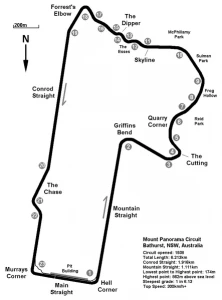
The excitement didn’t end there. Previously, in the build-up to the big race, a new closed-cockpit race record was set by Jules Gounon driving an unrestricted Mercedes-AMG GT3 car. Gounon, the three-time defending 12 Hour Bathurst race winner, clocked a 1 minute and 56.6054 second lap. Though this was an unofficial lap record (official lap records are set during racing itself), his time was quicker than the previous closed-cockpit track record (1 minute and 58.690 seconds) set in 2019 by Luke Youlden in a Brabham BT62. During this fastest lap for closed-cockpit cars, Gounon, in the Mercedes-AMG GT3, was hitting 270 km/h on Mountain Straight, 200 km/h into the Cutting, 240 km/h into McPhillamy, and 302 km/h into The Chase. This bid for a race record was part of Mercedes-AMG’s celebration of its 130th anniversary of being involved in motorsport.
And if you think that reading about it is exciting enough, try and take yourself there next year to actually watch at least some of it live. Motorsport is a lot more exciting when seen live in person, where you can feel the air shake, smell the fumes and see what those speeds actually look like as the vehicles pass you. Or if the full 12 hours of Bathurst isn’t for you, then check out another motorsport event – something that should be on every car enthusiast’s bucket list.
Or just enjoy the highlights reel:
Tips To Cope With Congested Traffic
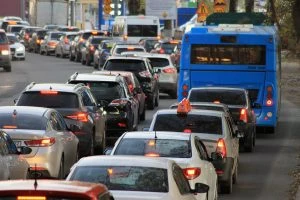
We’ve all been there, locked in grid traffic. And it’s always a bit tempting to slip past slower traffic, cutting back in front to get a little closer to the next set of lights before anyone else does. Yes, you’re with me!
These sorts of tedious, testing journeys may occur every day when you’re coming back from work or going to work. Traffic jams can occur after an accident has taken place or when people are heading away for the holidays all at once. It might be the popular school run, or it could be that everyone is dispersing all at once from the stadium car park after a big win for the Green and Golds. These phases of our journeys can be made to feel a little bit easier when you have planned well in advance and if you can keep an open mind that it won’t last forever. Being a little more flexible and giving yourself more time to get to your destination means that you can breathe a little easier and relax behind the wheel.
When the roads are busy, take your time and be aware of what’s happening around you. Try and give other road users the respect they deserve, too. There are others trying just as hard as you are to do the right thing and get to work on time. Yes, and they may not be as confident behind the wheel as you, so cut them some slack and don’t cut them off! If you keep a decent gap between your car and the car in front of you, you can look ahead and see what the traffic is doing, slowing gradually to maintain a nice steady flow with fewer sharp stop and start scenarios. It also helps to negate the all too common nose to tail accidents.
The same goes for merging lanes. Problems show up when some drivers stop in the merging lane to wait for a gap. Then there are those who would rather speed up and get ahead of another car in the line. Both of these styles aren’t cool, and both styles cause the traffic flow to come to a halt. Giving each other some space and time keeps the flow moving steadily, which is really what we all want anyway.
When you’re travelling home from a lazy day at the beach, or towing your caravan, or when maybe you just want to revel in the moment and soak up the scenery by travelling along at 70–80 km/h, well, that’s cool, but do keep in mind that there are other road users that have to make an appointment or who need to get to the start of a school rehearsal. Not everyone can travel this slow below what the open road limit allows, so use those mirrors and be aware of who needs to get past you. Show them respect because you are holding them up, and they are getting more and more frustrated at being dictated by you choosing to travel at a slower pace on a perfectly good piece of road with a much faster speed limit. Pull over and let them pass as often as you can, and don’t be the cause of a crash. Especially don’t be that driver who drives slowly along the windy bits or the parts with double yellow lines, then speeds up to the limit as soon as a passing lane or a clear straight comes along.
We all need to be prepared to react to someone’s mistake, poor judgement, or poor decision, whether the roads are busy or not. Keeping ourselves fresh and aware on the road while being courteous and respectful of others helps our journeys to be safe and enjoyable.
Ideas to help you stay calm:
- Play the right sort of music through your sound system – nothing too aggro. You don’t have to listen to soothing spa music, but anything that gets you on edge should be avoided.
- Practice diaphragmatic breathing, in through the nose and out through the mouth, trying to breathe with all of your torso.
- Remind yourself that all the other drivers are probably in the same boat as you and you all want to get home or to work. Maybe smile at some of the other drivers near you.
- Put on a really enjoyable podcast or audiobook. With a really good one, you might not want the journey to end!
- If the traffic is absolutely gridlocked and doesn’t look like it’s moving soon (e.g. if the road closes after a major accident), switch off your engine if applicable and move around while you’re waiting. Or get out your phone or laptop and do what you can for work. Just be aware of when the traffic starts moving again!
The Nissan Hyper Force Concept Car
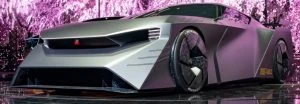
There would be little debate over whether a Nissan GT-R is a legendary supercar or not. It has been one of the most exciting cars of the last two to three decades, having even set a record on the Nürburgring racetrack of 7:08.68 min in 2013, which was achieved by the Nissan GT-R NISMO.
Recently, the Nissan Hyper Force concept car stunned the crowds at a car show in Japan. Could this concept potentially be the next new Nissan GT-R supercar?
The Nissan Hyper Force is an all-electric beast with a seriously brazen design suggesting time warp speeds! In the car’s layout is an application of some clever revolutionary solid-state batteries that enable the supercar’s output to power up to 985 kW. That’s almost 600 kW more than the current GT-R! It’s also good to see that solid-state batteries are starting to break out of the laboratory and into actual vehicles, as they have better safety performance. However, these solid-state batteries are inside something that’s got that little hit of adrenaline. This electric vehicle is electrifying.
With this level of output, the Nissan Hyper Force Concept car is carefully aerodynamically designed to ensure the air is pushed over the car to force it down on the road. In order to achieve the required levels of downforce, there are active winglets up the front end of the car to help channel air over the car, as well as a massive air scoop in the lower bumper, and an array of active fins for air manipulation. If you look at the back of the vehicle, the telltale twin LED taillight clusters are very typical of the Nissan Skyline GT-R. The massive wheel arches on the AWD machine look really spectacular, hiding what must be some serious rubber tyre profiles. If I were making a Batman movie, I’d cast this vehicle as the latest iteration of the Batmobile.
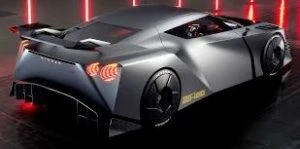
The doors open upwards and forwards in a gullwing-like action. Once the doors are opened, the onlookers are presented with a stunningly wild interior, featuring Lamborghini-crazy styling that is incredibly futuristic, offering sizzling red LED lighting vibes for high-speed driving modes. Gentler GT modes light up the interior in a blue colour. There are plenty of information displays and stylish graphics, as you’d expect. The interior styling continues the edgy, angular diagonal lines of the exterior, giving a Batmobile vibe. And did I see harness style seatbelts in there?
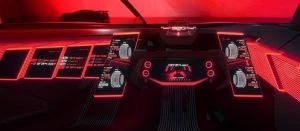
The Nissan Hyper Force concept was at the Japanese car show to inspire people, and to give them a taste of what a new roadgoing Nissan supercar (potentially GT-R) of the future might look like. This is seriously cool! Here’s hoping that we’ll see some of the ideas trickling down. I particularly like the idea of the ambient lighting changing with the driving style, so I hope that we see that one in upcoming Nissan models. I’d also like to see the harness-style seatbelts making their way into regular cars, though they’d take a bit of getting used to, especially for a women (but they could easily be an improvement over the three-pointers we’re used to).
Find out more and have a drool in the official promo video from Nissan:
Best Sellers for 2023
Classed as the best-selling new vehicle in Australia for 2023, and nearly doubling the number sold to third place getter, the Toyota Hilux remains Australia’s favourite.

Just behind, and in second place, is the magnificent Ford Ranger, with its sales on the up and up.
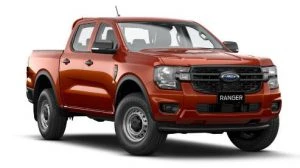
At about half the number of Toyota Hilux vehicles sold new, the perky little MG ZS has made a fantastic effort to take third place with 25,689 of these bargain-priced new SUVs shifted by early November this year.
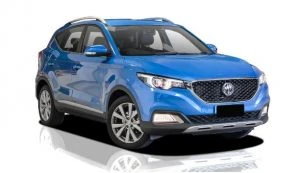
Down 18% from last year, the Toyota RAV4 sales took fourth spot – perhaps due to the MG ZS’s success.
Another Ute with a strong showing was the fifth place getter: the mighty Isuzu D-Max ute.
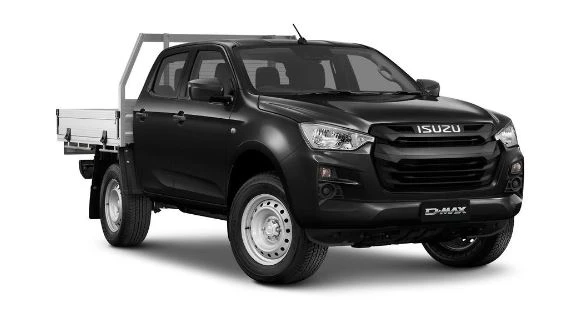
Up a whopping 276% is Tesla’s Model Y. The Model Y took sixth spot. It will be interesting to see if the trend continues over time.
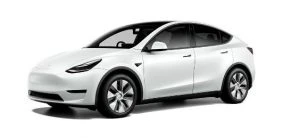
In seventh place is a petrol/Hybrid/EV SUV that has made a strong showing with a 28% increase in sales over this last year. And this is the rather likable SUV: the Mitsubishi Outlander – having managed to shift 20,000 units.
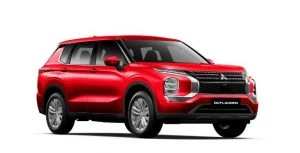
Mazda’s CX-5 is another small SUV that has had to settle for a reduced portion of the pie this year. It’s in eighth place – maybe because there are still plenty of happy Mazda CX-5 owners driving about in the CX-5 which they purchased over the last couple of years!
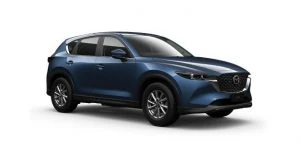
Ninth spot goes to Hyundai’s i30.
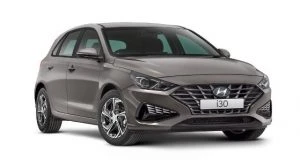
Close behind in tenth place is the i30’s bigger brother: The Hyundai Tucson.
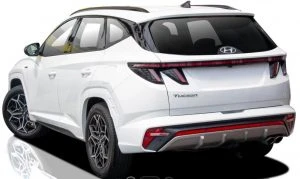
- 16,122 Toyota Corollas were sold – 11th.
- 15,718 Tesla Model 3s were sold – 12th.
- 15,145 Toyota LandCruiser Prados were sold – 13th.
- 14,727 Mazda BT-50s were sold – 14th.
- 13,600 Mitsubishi Tritons were sold – 15th.
- 13,497 MG 3s were sold – 16th.
- 13,464 Subaru Foresters were sold – 17th.
- 13,324 Mazda CX-3s were sold 18th.
- 12,642 Kia Sportages were sold – 19th.
- 12,266 Toyota LandCruiser 300/76/78 Series were sold – 20th.
It’s amazing how closely contested place getters 11 through to 20 actually are – most of them SUVs. It’s nice to see a Subaru in the mix. Isn’t there a glaringly obvious absence of European vehicles? Where was Honda?